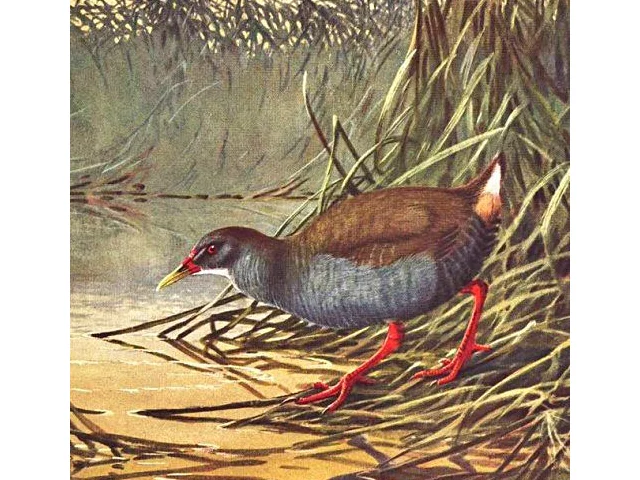Zapata Rail rediscovered after 40 years?
064613db-ae2f-44de-9f8f-67a3f8a99d0c

Ornithologists are convinced they have rediscovered a rare Cuban rail species, thought to be possibly extinct for more than four decades.
An ornithological search-team have caught a glimpse of one of the world’s most threatened waterbirds, the Critically Endangered Zapata Rail Cyanolimnas cerverai. The sighting is the first documented in more than four decades and offers hope to conservationists working to ensure its survival.
First described in the early twentieth century, the only nest that has ever been found was by ornithologist James Bond – whose name was appropriated by Ian Fleming (himself a birder) for his fictional spy – and little has since been discovered about its behaviour and breeding ecology. Hopes were fading that viable populations of the Cuban waterbird remained, and BirdLife have estimated that less than 250 individuals currently exist.
The fleeting encounter, only now made public, occurred in November 2014. After a series of co-ordinated surveys of south-west Cuba’s Zapata Swamp, ornithologists (including Andy Mitchell and staff from the Cuban Museum of Natural History) saw the bird only after deciding to cut thin strips or rides into the sawgrass to momentarily expose the secretive birds as they moved through the wetland.
A number of species were seen using the observation rides, including four species of rail. Sora were the most frequent and unperturbed by being out in the open and feeding. King Rail checked the ride and then ran across, while Spotted Rail were very circumspect in moving around the rides.
Zapata Rail was seen twice on one day. “In the first instance, the head protruded from the sawgrass at the side of the ride,” recounted Andy Mitchell. “After a few seconds the bird emerged slowly into the open, stopped for a few seconds before moving off into the sawgrass on the other side of the ride.” The second instance was about 80m away where the bird performed similarly.
Now believed rediscovered, conservation efforts for Zapata Rail will target the wetland in which it was seen, an Important Bird and Biodiversity Area covering 530,695 ha of wetland in southern Matanzas province. A new project management plan will be developed to assess the species’ current population size, distribution and status.
With further confirmation, the sighting will be the latest success in BirdLife’s Preventing Extinctions Programme, which aims to halt extinctions through rigorous science and practical conservation delivered by a range of partners on the ground.
An ornithological search-team have caught a glimpse of one of the world’s most threatened waterbirds, the Critically Endangered Zapata Rail Cyanolimnas cerverai. The sighting is the first documented in more than four decades and offers hope to conservationists working to ensure its survival.
First described in the early twentieth century, the only nest that has ever been found was by ornithologist James Bond – whose name was appropriated by Ian Fleming (himself a birder) for his fictional spy – and little has since been discovered about its behaviour and breeding ecology. Hopes were fading that viable populations of the Cuban waterbird remained, and BirdLife have estimated that less than 250 individuals currently exist.
The fleeting encounter, only now made public, occurred in November 2014. After a series of co-ordinated surveys of south-west Cuba’s Zapata Swamp, ornithologists (including Andy Mitchell and staff from the Cuban Museum of Natural History) saw the bird only after deciding to cut thin strips or rides into the sawgrass to momentarily expose the secretive birds as they moved through the wetland.
A number of species were seen using the observation rides, including four species of rail. Sora were the most frequent and unperturbed by being out in the open and feeding. King Rail checked the ride and then ran across, while Spotted Rail were very circumspect in moving around the rides.
Zapata Rail was seen twice on one day. “In the first instance, the head protruded from the sawgrass at the side of the ride,” recounted Andy Mitchell. “After a few seconds the bird emerged slowly into the open, stopped for a few seconds before moving off into the sawgrass on the other side of the ride.” The second instance was about 80m away where the bird performed similarly.
Now believed rediscovered, conservation efforts for Zapata Rail will target the wetland in which it was seen, an Important Bird and Biodiversity Area covering 530,695 ha of wetland in southern Matanzas province. A new project management plan will be developed to assess the species’ current population size, distribution and status.
With further confirmation, the sighting will be the latest success in BirdLife’s Preventing Extinctions Programme, which aims to halt extinctions through rigorous science and practical conservation delivered by a range of partners on the ground.

